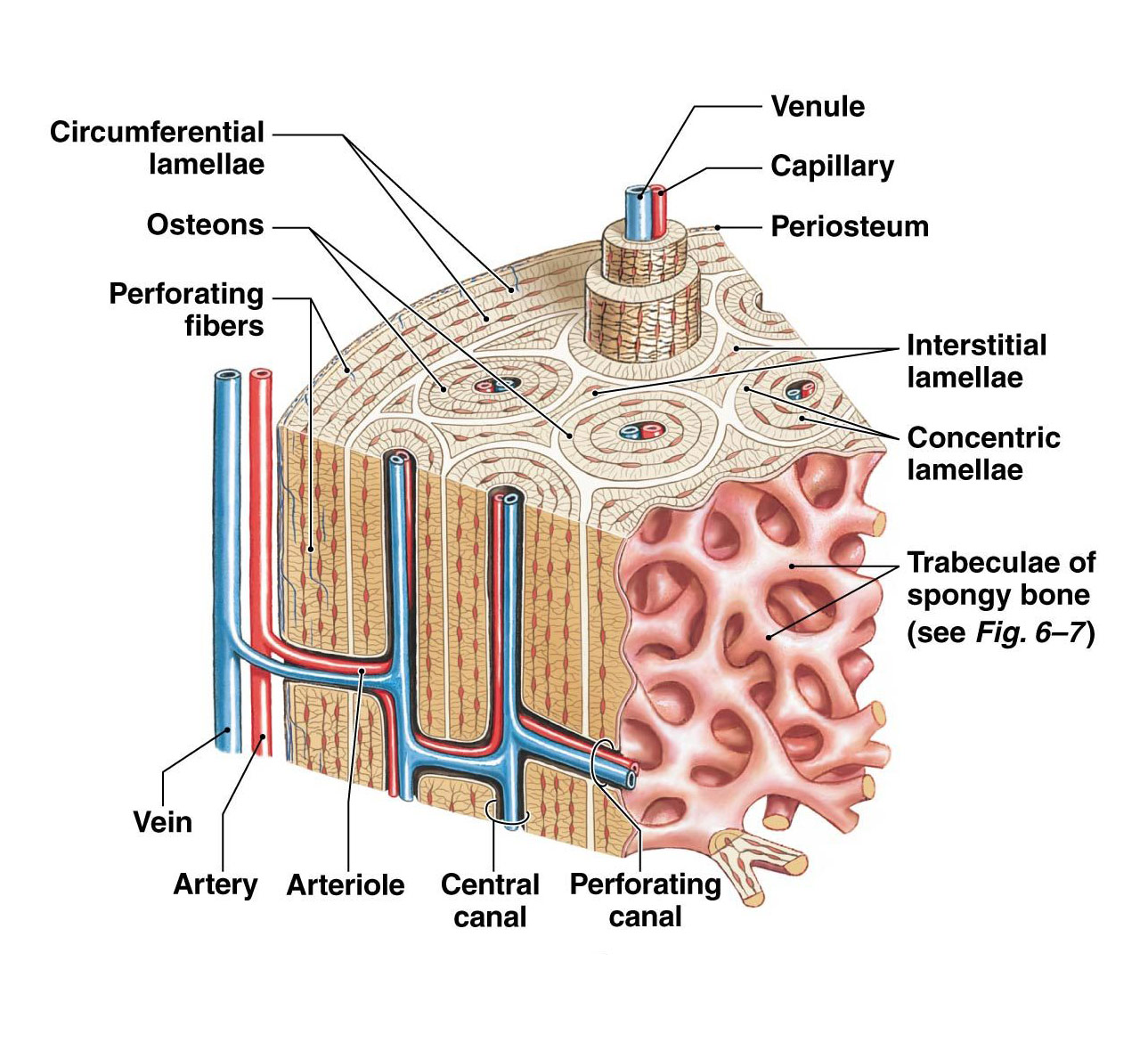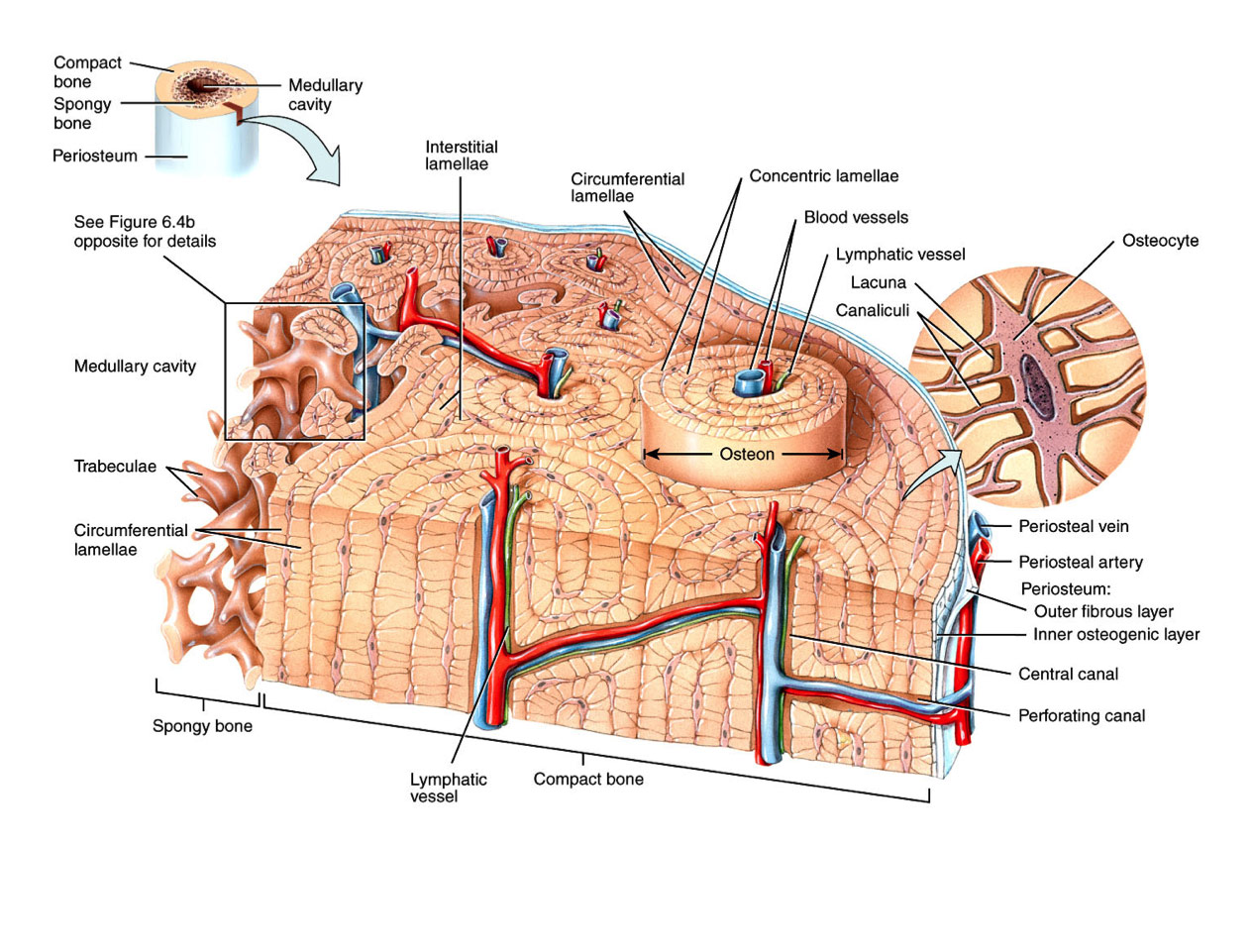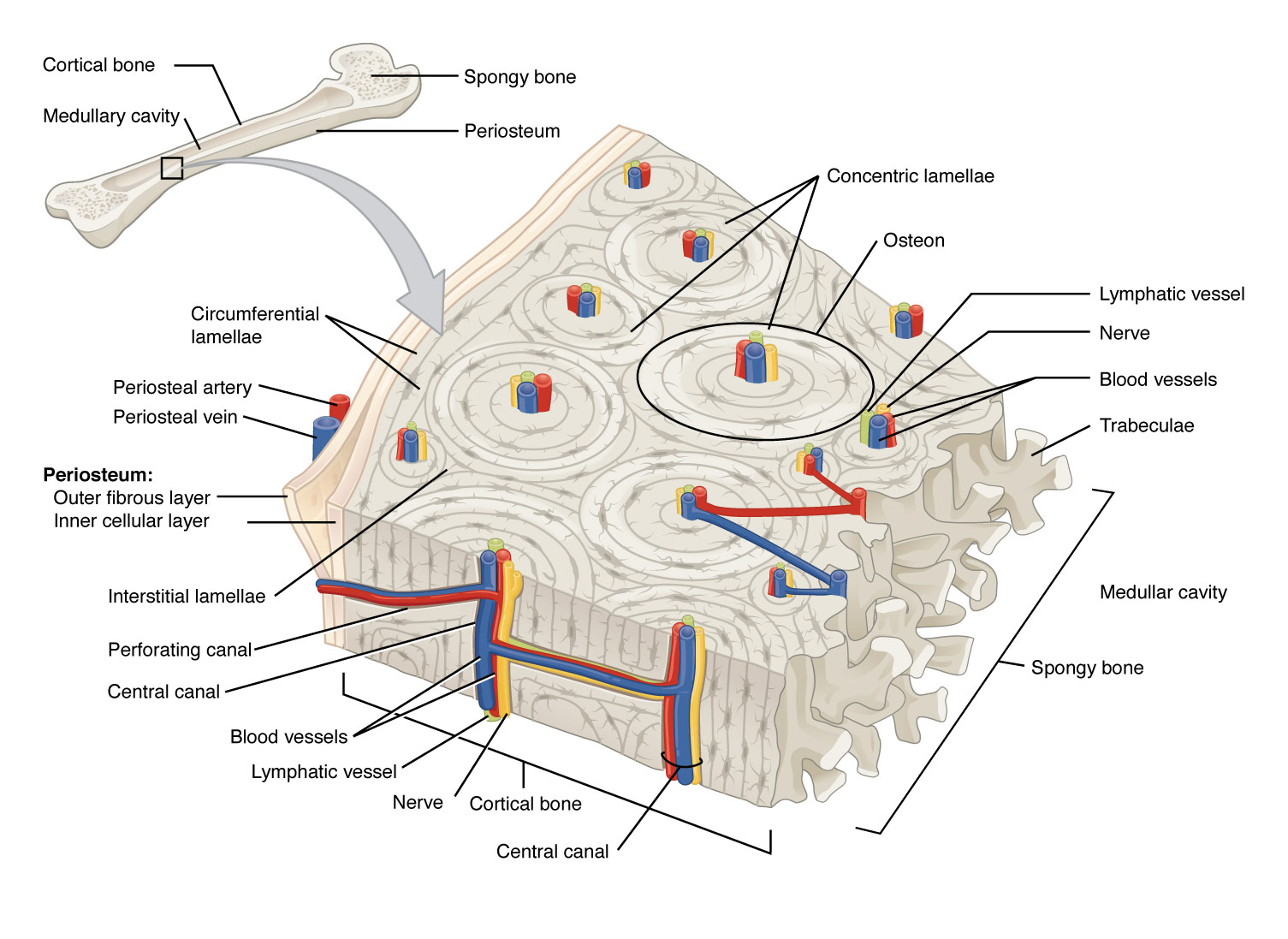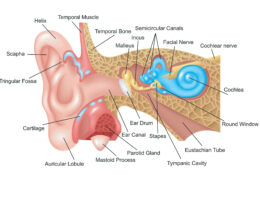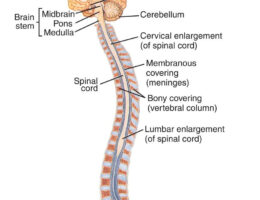Compact bone, also known as cortical bone, is one of the two main types of bone tissue that forms the outer layer of bones in the human body. A labeled diagram of compact bone may include the following parts:
- Haversian system: A central canal that runs through the length of the bone, containing blood vessels and nerves.
- Lamellae: Concentric layers of mineralized matrix that surround the Haversian system.
- Lacunae: Small cavities in the bone matrix that house osteocytes, the bone cells that maintain bone tissue.
- Canaliculi: Tiny channels that connect adjacent lacunae and allow osteocytes to communicate with each other and with the blood supply.
- Volkmann’s canals: Transverse channels that connect adjacent Haversian systems and provide blood supply to the bone tissue.
- Periosteum: A dense layer of connective tissue that covers the outer surface of the bone and provides attachment for muscles and tendons.
Compact bone is characterized by its dense, solid structure and is designed to provide strength and support to the skeleton. The Haversian system and associated structures form a complex network of blood vessels and nerves that supply the bone tissue with essential nutrients and allow for efficient communication between cells. The lamellae, lacunae, and canaliculi work together to ensure that bone tissue is constantly remodeled and maintained in response to mechanical stress and other environmental factors. Dysfunction of compact bone can lead to a variety of skeletal disorders, including osteoporosis, osteomyelitis, and bone tumors.
